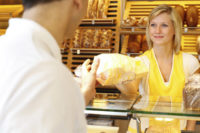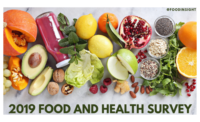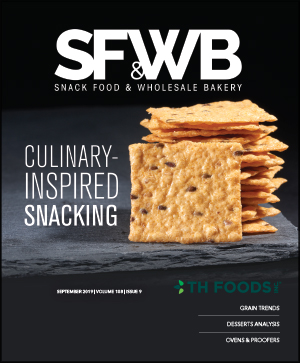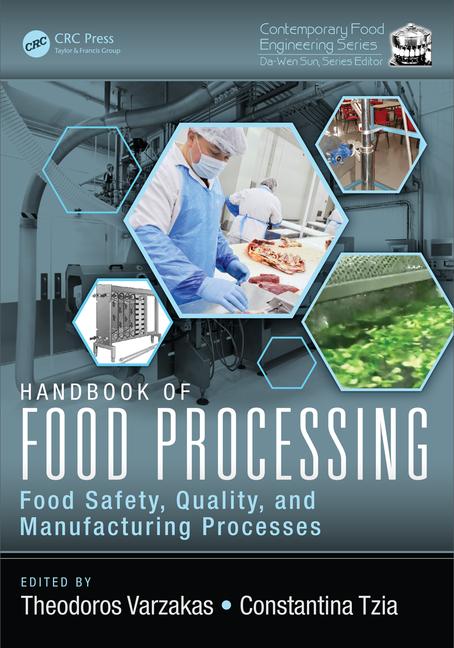Surviving Food Fads & Fad Diets
By Gary G. Kyle and W. Dan Nagle
Food fads are like hurricanes. They come in rather violently, stay for a while and then pass on leaving behind a marketing mess and a big hole in the budget. Here are some innovative ideas on how to survive in the long run.
Many of you will remember when oat bran was the hot food fad in the 1980s. It would lower your cholesterol promised the ads and, as a result, oat bran was going into everything. It was already in cereals, but because of the “good news,” it went into pretzels, specialty breads, muffins, bagels and a host of other bakery products. After a while, its efficacy in controlling cholesterol was deflated, and many of the new-kids-on-the-block started to outlive their codes and began disappearing from the store shelves.
Then came the low-fat craze in the ’90s based on the Surgeon General’s nutrition study that warned Americans to reduce the amount of fat in their diets. Suddenly, 20% of all new food products were positioned as “low-fat” entries. It wasn’t very long before the low-fat trend began sliding, until only a few major weight-reducing brands survived. Low-fat products also had the handicap of not tasting as good as the original product from which the fat was degreased. The idea was great, but the taste was not, and that was obvious on the first bite.
As we travel the nation and evaluate store shelves, it is evident that the carb craze has peaked and is now in the decline stage of the product life cycle. We have seen a number of low-carbohydrate food products fall prey to de-listing in the past six months due to poor turns and inadequate margin contribution to the category. Look for more to come soon.
Certainly, that trend toward de-listing is evident in the bakery section. Let’s put it bluntly. The bulk of these low-carb attempts at product innovation by the baking industry flat out taste bad. After the investment in trial-generating tactics dry up, consumers are not making repeat purchases, and as a result, there is no franchise.
Rather, consumers are saying things like, “I may as well have eaten the package.” Unfortunately, we agree. The consumer is making the decision for the marketers. Bottom line? They will not give up taste in exchange for lower levels of carbs.
More Cost, Less Taste
Some sweet baked goods manufacturers are now trying less sugar or sugar-free products to breathe life into declining brand franchises. Unless consumers suffer from diabetes, why would they buy and consume these products? They cost more and have less taste. Think about it. When you investigate the sugar substitutes being used, you’ll find that, from a health standpoint, they are worse for you than full-sugar products.
Today’s consumers are knowledgeable and sophisticated. They don’t appear to have been fooled by any of these “marketing strategies” designed to ride on the back of a medical, obesity warning.
Food fads are like hurricanes. They come in rather violently, stay for a while and then pass on leaving behind a marketing mess and a big hole in the budget.
Unfortunately, it seems that there has never been a food fad that packaged goods manufacturers didn’t like. They go for them every time and scurry about throwing money into the mix in a frantic effort to capture share in a panicky market.
In our view, this is a good example of a combination of very poor tactics and no marketing strategy.
The low-carb craze is now beginning to look like “the low-carb debacle.” The “craze” is waning fast, and the cost is going to affect the bottom line of many packaged goods manufacturers.
In a recent article in the New York Times, our colleague Richard Kochersperger, associate professor of food marketing at St. Joseph’s University in Philadelphia, put the carb craze in succinct perspective: “This thing was a flash fire.”
Then, he added: “I think this time the depth of product failure is going to be staggering.”
That can be interpreted as meaning; “It ain’t going to sell, and it’s going to cost packaged goods manufacturers a bundle for which the only thing they’ll have to show for it is egg on their face.”
Bakery manufacturers seem to be the first to take the “food fad” bait in the hope of discovering the Holy Grail.
Over and over again, bakers try to create a more healthful alterative that has the same taste as the original sweet snack had. They engineer it to have no sugar, no fat, no starch and low cholesterol and still have the nutritional value of a porterhouse steak. Then typically, consumers take one bite, spit it out and throw the rest into a garbage can. What a waste of time and money for everyone involved.
As snack cake marketers for a combined total of 40 years, we were not surprised to see how quickly some of the major brands in this category jumped on the low-carb bandwagon. This is a tendency, we learned the hard way a long time ago, that works like an infectious disease. Once you catch it, it’s very hard to get rid of it. We had to fight the temptation constantly to keep our feet on the ground and our marketing funds in our pockets.
Now the latest urge to jump on the food-fad bandwagon with low-carb sweet goods has reared its ugly head. These companies wanted to jump into the craze while it still was hot. Is this sound, responsible marketing? Or is it that some newcomers are just learning the trade? Ironically, just as these companies jumped on the bandwagon, consumers were jumping off it because many of the products failed to live up to their expectations.
Every year, millions of marketing dollars are wasted in this new products churn designed to take advantage of emerging consumer trends. In its attempt to break out of the quagmire it operates in, the baking industry is guilty of trying to react too quickly to short-term trends.
Wholesale bakers want to stem unit erosion immediately so they take action on the basis of gut feel and qualitative research. It’s the wrong approach. As the majority of these “instinctive new products” fail, both the consumers and stakeholders lose.
Also, as experienced marketers, we know that sweet baked goods are an indulgent food. We know that people buy them because they taste good, not because they will help you to lose weight or cut down on cholesterol. Consumers purchase them because they enjoy the experience of eating these indulgent treats. It’s that simple.
If the product has been on the market for many years and you have a long-standing, consumer franchise, you simply can’t alter the taste for any reason without the great risk of losing consumers and then, ultimately, losing market share.
Food for Thought
Here’s some food for thought: Ever wonder why the candy aisle keeps getting bigger and bigger, while selling fundamentally the same products as sweet snacks? And candy has never had a significant low-fat, low-cholesterol or low-carb entry?
We wondered a long time ago about this, and we know why it is so. Candy manufacturers know that they’re selling an indulgent food, and they stay on message with the simple theme that it “tastes good.” Moreover, these producers are never satisfied with the status quo. They continue to find ways to innovate.
More food for thought: If you create a “light” or most healthful version of product that doesn’t taste as good as its wrapper, you risk damaging the brand and all of the equity that you have invested in building it over the years.
In the eyes of the consumer, you’ve betrayed them. Even if you think you’re making the product “better,” you’ll lose consumers. It’s not whether you make the product better or worse, it’s that you made it different.
When consumers spend a lifetime buying and enjoying a product because of its taste and texture, you don’t fool around with what made the brand so popular in the first place. Taste is the soul of the product. Because your loyal consumers have eaten the product for a long time, they will be super sensitive to even the slightest change in its taste and will instantly recognize that the product has been altered. Think about when Coca Cola, even with all its money and marketing power, tried to make Coke “better.” Tons of marketing books have been written about how the company had to scramble back with “Classic Coke.”
If your cheese cracker has a distinctive taste profile, don’t change to a cheaper cheese or an artificial alternative. You’ll lose your consumer base.
If you have a popular bread brand, don’t change its flavor or texture just to extend the shelf life and save a few pennies. The money you saved on stales will surely be lost by the drop in sales.
So, how does one survive in a hurricane of food fads? You survive by handling it like any other hurricane. You hunker down until the storm blows over, and while it’s blowing over, you do what you do best with the products that have been paying the bills for years.
The history of food marketing tells us that you can bet on a food fad coming in like a lion and going out like a lamb in a relatively short time. Don’t get sucked in by jumping into the fad to get a leg up on your competition. Save your efforts and your treasure instead of dissipating them on a fad that may not last more than a couple of years.
Yes, your sales may take a hit in the short term, but at least you won’t exacerbate your losses by gambling more of your resources and taking your focus off your core businesses and your core competencies. Absorb your losses, spend your money on promotions or anything else that continues to move your product at whatever pace you can until the storm blows over. Have faith in the products that have built your company. Have faith in your production capabilities, your sales force, your marketing professionals and your customer’s good sense. Don’t get overextended. If, in defiance of history, the “hurricane” doesn’t blow over and the fad becomes permanent, there will be time enough and money enough to catch up.
Remember the keys to success in new product development, something we believe many bakery manufacturers have lost sight of in trying to ride the wave of a food fad:
Stick to your core competencies. Fill the gap in the market instead of riding someone else’s bandwagon.
Know your consumer cold. Products need to solve their problems, not yours.
Innovation is paramount. Line extensions won’t generate the growth that the industry requires.
Stop the hip shooting. Research, research, research. Too many products go to market on the basis of focus group endorsement or other qualitative methodology, or even worse, executive “gut feel.”
New, food-fad product entries generally lack most, if not all, of these keys to success, and that’s why they fail.
Editor’s Note: Based in Philadelphia, Nagle-Kyle Associates, Inc. specializes in delivering solutions for strategic growth for consumer packaged-goods companies throughout North America. For more information, call 267-238-3887.








